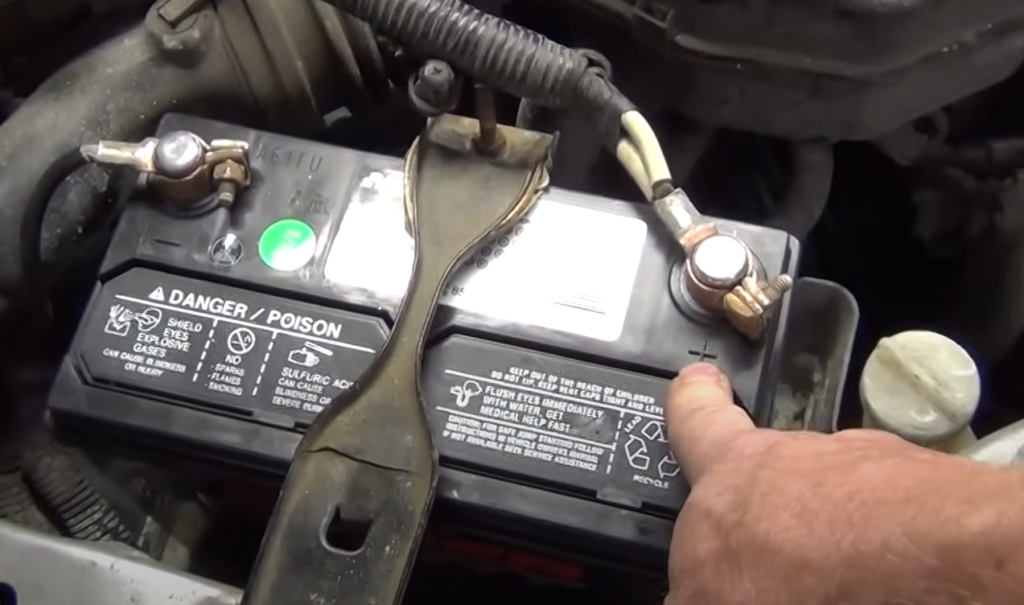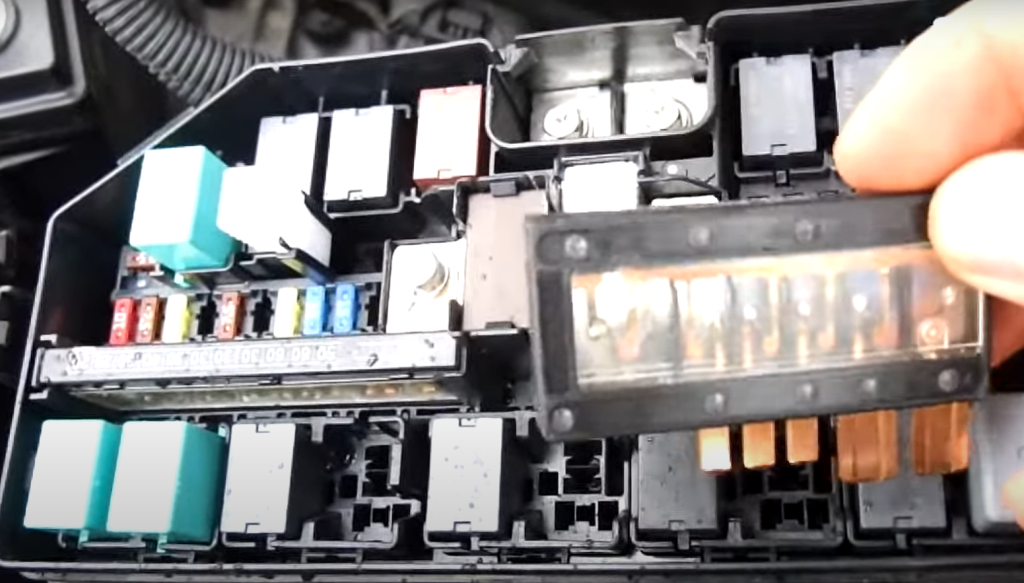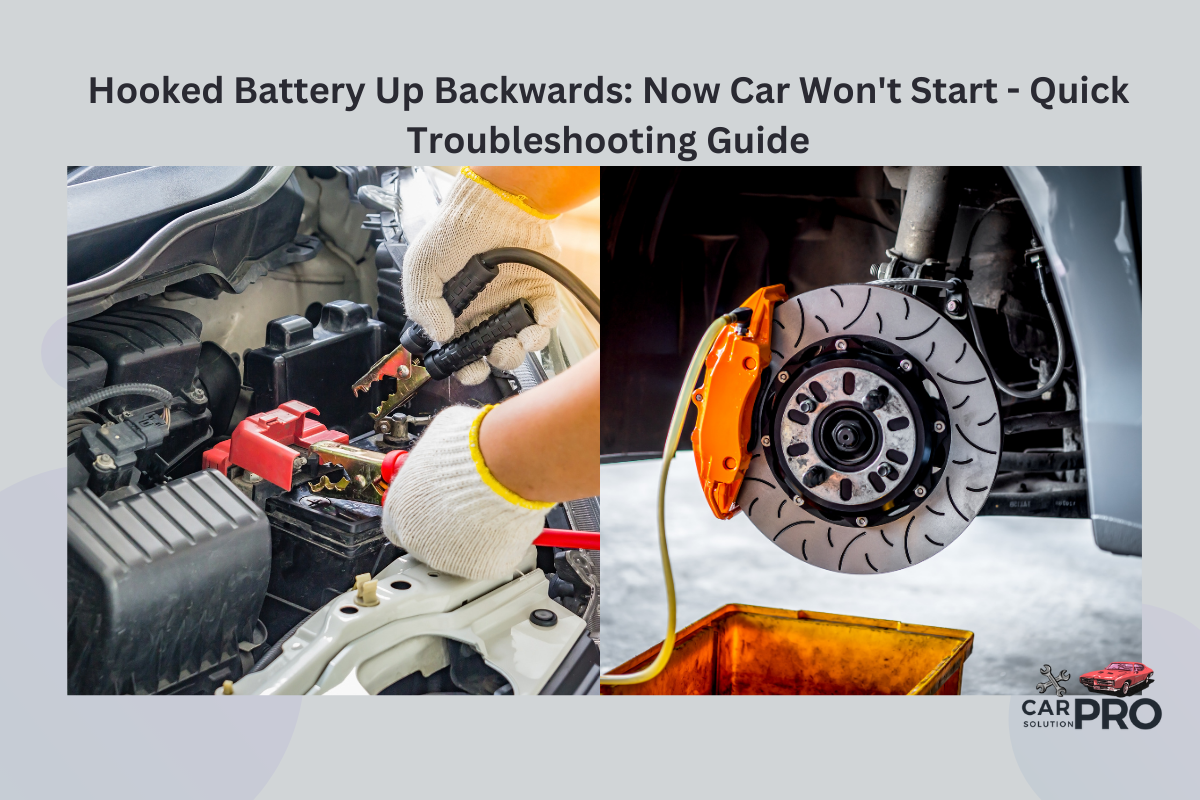Connecting a car battery backwards can lead to serious problems. Many drivers have faced this issue and found themselves stuck with a car that won’t start. Reversing the battery connections often blows fuses or damages electronic components, preventing the vehicle from starting.
The good news is that fixing a car that won’t start after hooking up the battery backwards is often possible. The first step is to check for blown fuses, as these are designed to protect the car’s electrical system. If fuses are intact, the problem may lie with damaged electronic parts.
Drivers who find themselves in this situation should not panic. With the right approach, it’s possible to diagnose and fix the issue. Sometimes, simply reconnecting the battery correctly is enough to solve the problem. In other cases, professional help may be needed to repair or replace damaged components.
Key Takeaways
- Reversed battery connections can blow fuses and damage electronic parts
- Checking fuses is the first step in troubleshooting the issue
- Professional help may be needed if simple fixes don’t work
Assessing the Damage
When a car battery is connected backwards, it can cause various issues. A proper assessment helps identify and fix problems quickly. This involves checking key components and systems.
Initial Diagnosis
Start by looking for obvious signs of damage. Check for smoke, burning smells, or melted parts under the hood. These can point to serious electrical problems.
Listen for any unusual noises when trying to start the car. A clicking sound might mean the starter is damaged.
Try turning on the headlights. If they don’t work, it could mean blown fuses or other electrical issues.
Battery Inspection
Examine the battery closely for any physical damage. Look for cracks, leaks, or swelling.
Check the battery terminals for corrosion or burn marks. Clean them if needed.
Use a voltmeter to test the battery’s charge. A fully charged car battery should read around 12.6 volts.
If the battery is damaged, it may need replacement. Handle batteries with care as they contain harmful chemicals.
Electrical System Check
Inspect the fuses for any signs of damage. Replace blown fuses with new ones of the same amperage.
Test the alternator. A faulty alternator can prevent the car from starting or cause it to die soon after.
Check the starter motor. If it’s damaged, the engine won’t turn over when you try to start the car.
Look at the wiring harness for any visible damage. Melted or frayed wires can cause electrical problems.
Consider using a diagnostic tool to check for error codes. This can help pinpoint specific issues in the car’s computer system.
Troubleshooting Procedures

When a car won’t start after hooking up the battery backwards, following proper troubleshooting steps is crucial. These procedures help identify and fix the problem safely while preventing further damage to the vehicle’s electrical system.
Safety Precautions
Before starting any troubleshooting, safety must be the top priority. Put on insulated gloves and safety glasses to protect against electrical shocks and sparks. Disconnect the battery completely and wait at least 15 minutes for any residual charge to dissipate.
Remove all metal jewelry and use insulated tools when working on electrical components. Keep a fire extinguisher nearby as a precaution. Never smoke or use open flames around the battery or engine compartment.
Check for any signs of burning, melting, or damage to wires and components. If there’s visible damage, it’s best to have a professional inspect the car before attempting repairs.
Voltage Tests
Start by testing the battery voltage with a multimeter. A healthy car battery should read between 12.4 and 12.7 volts. If it’s below 12 volts, charge the battery before proceeding.
Next, check the main fuse box and look for blown fuses. Replace any that are damaged. Test the alternator by starting the engine (if possible) and measuring the voltage across the battery terminals. It should read between 13.8 and 14.4 volts.
Use the multimeter to check for voltage at various electrical components like the starter motor, ignition switch, and fuel pump. No voltage could indicate a blown fuse or damaged wiring.
If these tests don’t reveal the issue, a more thorough diagnostic scan may be necessary to check for damage to the car’s computer systems.
Common Issues After Reverse Polarity
Connecting a car battery backwards can cause serious damage to the vehicle’s electrical system. The main problems often involve blown fuses and harm to important electrical parts.
Fuse and Fusible Links
When a battery is hooked up backwards, fuses are the first line of defense. They protect the car’s electrical system by blowing out when too much current flows. This stops electricity from reaching other parts and causing more damage.
The main fuse box and fusible links need checking right away. Fusible links are special wires that melt when overloaded. They’re found near the battery or fuse box.
Replacing blown fuses is a key first step. But it’s not always enough. Even with new fuses, the car might not start if other parts got damaged.
ECU and Electrical Components
The Engine Control Unit (ECU) and other electrical parts can get fried by reverse polarity. The ECU is the car’s brain. It controls many systems and is very sensitive to electrical problems.
Damage to the ECU or other modules can cause various issues:
- Engine won’t start or run properly
- Warning lights on the dashboard
- Electrical systems not working
- Strange behavior from car computers
Fixing these problems often needs expert help. A mechanic might need to test or replace the ECU and other damaged parts. This can be costly and time-consuming.
Repair and Replacement Guide
Fixing a car that won’t start due to reversed battery connections involves key steps. These include replacing damaged fuses, properly reconnecting the battery, and resetting the car’s computer system.
Replacing Damaged Fuses
When a battery is hooked up backwards, fuses often blow to protect the car’s electrical system. Start by checking the main fuse box under the hood. Look for any visibly burnt or melted fuses.
Use the car’s manual to identify which fuses may have blown. Common ones to check include:
- Main battery fuse
- Alternator fuse
- Starter fuse
- ECU fuse
Replace any blown fuses with new ones of the same amperage. Don’t use higher amp fuses as this can cause damage.
If the main fusible link is damaged, it will need replacement. This part protects the entire electrical system and is crucial to fix.
Battery Reconnection
After replacing fuses, reconnect the battery correctly. Follow these steps:
- Clean battery terminals with a wire brush.
- Connect the positive (red) cable to the positive terminal first.
- Attach the negative (black) cable to the negative terminal.
- Tighten connections securely.
Double-check all connections are tight and correct. Loose or wrong connections can cause starting issues or damage.
ECU Reset Procedures
The car’s Engine Control Unit (ECU) may need resetting after a reversed battery incident. This process can vary by car model.
A general method to reset the ECU:
- Disconnect the battery for 15 minutes.
- Reconnect the battery.
- Turn the key to “On” position for 30 seconds without starting the engine.
- Start the engine and let it idle for a few minutes.
For some cars, driving for 10-15 minutes helps the ECU relearn settings. If problems persist, a professional diagnostic scan may be needed to check for ECU damage.
Preventative Measures
Proper battery installation and regular upkeep are key to avoiding issues with car batteries. These steps can help prevent accidental reverse connections and keep your vehicle running smoothly.
Correct Battery Installation
When installing a car battery, pay close attention to the polarity markings. The positive terminal is usually marked with a plus sign (+) or red color. The negative terminal often has a minus sign (-) or black color.
Double-check these markings before connecting the cables. Always connect the positive cable first, then the negative. This reduces the risk of sparks and short circuits.
Use protective gear like gloves and safety glasses when handling batteries. They contain corrosive chemicals that can be harmful if spilled.
If unsure about the installation process, consult your car’s manual or seek help from a professional mechanic. Proper installation is crucial for avoiding electrical problems.
Regular Maintenance Tips
Check your battery connections regularly for signs of corrosion or looseness. Clean any corrosion with a mixture of baking soda and water. Tighten loose connections to ensure good contact.
Test your battery’s voltage every few months using a multimeter. A healthy battery should read around 12.6 volts when the engine is off.
Keep the battery clean and dry. Dirt and moisture can create paths for electricity to flow between terminals, draining the battery.
In cold weather, use a battery blanket to keep it warm. This helps maintain its charge and performance.
Regular maintenance can extend your battery’s life and prevent unexpected failures. If your battery is more than three years old, have it professionally tested annually.
Frequently Asked Questions
Connecting a car battery backwards can cause serious issues. Several components may be affected, and specific troubleshooting steps are needed to identify and fix the problems.
What fuse is likely to blow when a battery is connected in reverse?

The main fuse or fusible link is often the first to blow when a battery is connected in reverse. This fuse is designed to protect the car’s electrical system from damage.
It’s usually located in the fuse box under the hood or near the battery. Checking this fuse is a good first step in diagnosing issues after a reverse connection.
Can reversing the battery terminals damage my vehicle’s electrical system?
Yes, reversing battery polarity can damage a vehicle’s electrical system. It may fry sensitive electronic components like the Engine Control Unit (ECU) or alternator.
The extent of damage depends on how long the battery was connected backwards and the car’s protective measures. Modern vehicles often have safeguards, but older cars may be more vulnerable.
Why won’t my car start after I accidentally switched the battery cables?
A car may not start after reversed battery connections due to blown fuses, damaged alternator, or a fried ECU. The electrical surge from reverse polarity can cause multiple components to fail.
Some systems may still work while others don’t, making diagnosis tricky. A thorough inspection of the electrical system is needed to pinpoint the exact issues.
Is it possible to repair a car that won’t start due to reverse polarity during a jump start?
Repairing a car that won’t start due to reverse polarity is often possible. The first step is to check and replace blown fuses.
If fuse replacement doesn’t solve the issue, further diagnosis may be needed. In some cases, components like the alternator or ECU may need replacement.
What are the risks of connecting a car battery with reversed polarity?
Connecting a battery with reversed polarity can lead to various risks. These include blown fuses, damaged wiring, fried electronic modules, and a dead battery.
In severe cases, it may cause a fire or explosion. The risks underscore the importance of double-checking connections when installing or jump-starting a battery.
What should I inspect if I accidentally hooked my battery up backwards and my car won’t start?
If the car won’t start after a reversed battery connection, start by checking the main fuse and other fuses in the fuse box. Look for signs of burning or damage.
Inspect the battery for damage and test its charge. Check the alternator and starter motor for proper function. If these steps don’t reveal the issue, a professional diagnostic may be necessary.


